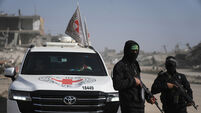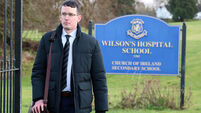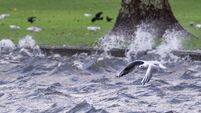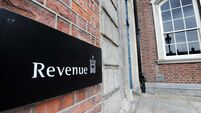Spanair temperature gauge 'must be investigated'
Spain's civil aviation chief said a glitch in an air temperature gauge that forced the doomed Spanair jet to abandon its first take-off attempt an hour before it crashed should be examined.
Manuel Bautista said a combination of failures - either technical, human or both - probably caused Wednesday's crash in Madrid, which killed 153 people, many of them children and families on holiday. Nineteen people survived.
Aviation experts have described the air gauge problem as a relatively minor thing unlikely to have caused the crash. But Mr Bautista would not rule out a link, saying it depended on what else was happening to the plane, an MD-82.
The fault occurred while the jet was taxiing on its first take-off attempt, causing the pilot to turn the plane around. After technicians were brought in to take a look, the gauge was essentially turned off, which is accepted procedure, and the plane was cleared for take-off, according to Spanair. It crashed on the second take-off attempt.
"A problem with a temperature sensor may not matter at all, or it can be very important, depending on what other circumstances accompany it," Mr Bautista said. "We will have to see what other issues were present.
"Clearly, the breakdown was important enough for the pilot to halt the manoeuvre and have it reviewed."
Some eyewitnesses reported seeing fire in one of the plane's two engines shortly before it crashed, but Mr Bautista said that even if true, a single engine's failure alone would not have been enough to bring down a modern aircraft, which is designed to fly on one engine if necessary.
Many relatives of the victims are being put up at a hotel while they wait to collect the remains of their loved ones.
An official funeral presided over by Madrid's archbishop will take place on September 1.
The investigation into the crash could take months.
Experts from the US National Transportation Safety Board, Boeing - which acquired plane manufacturer McDonnell Douglas in 1997 - and engine manufacturer Pratt & Whitney - have arrived in Spain to help.
The two black box flight recorders have been recovered. The government said the one that recorded technical data on the flight was badly damaged, but Mr Bautista said he did not know how much this might hinder the investigation.
He said he had seen - but would not comment on - video footage from the airport that showed the doomed airliner trying to take off. Newspapers El Pais and ABC said it showed no engine explosion, contrary to some witness accounts.
The video is reported to show the plane using up virtually the entire runway as it tries to take off, then struggling to gain altitude. The airliner eventually crashed, skidded, burned and largely disintegrated.
Another factor investigators will be looking at is the position of survivors on the flight. El Pais reported that five of them had been sitting towards the front of the plane, including 30-year-old Spanish telecoms engineer Rafael Vidal, who had been bumped off an earlier flight because it was full.
"Flying first class is what saved him," said his mother, Pilar Rodriguez.














